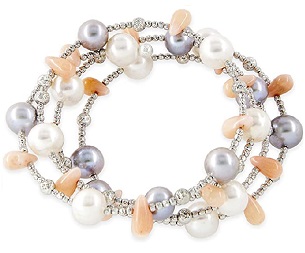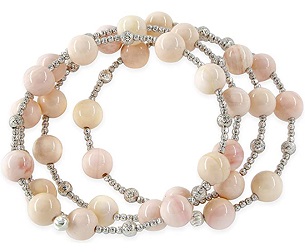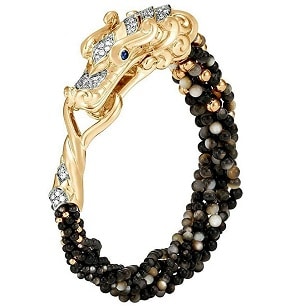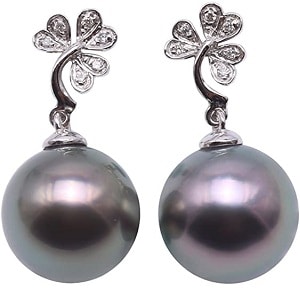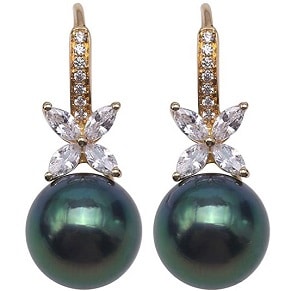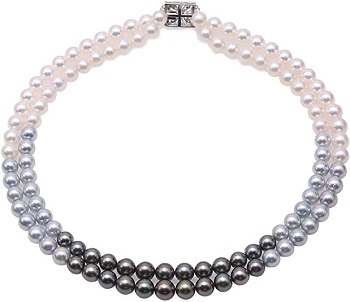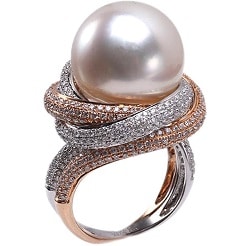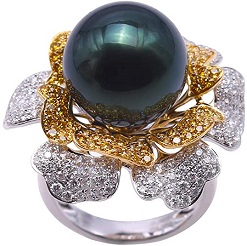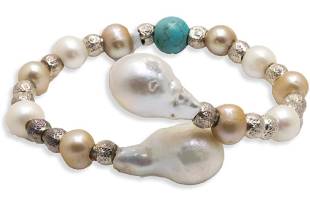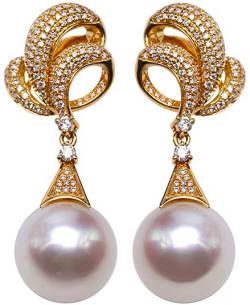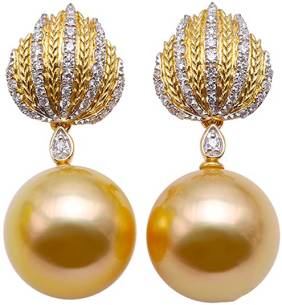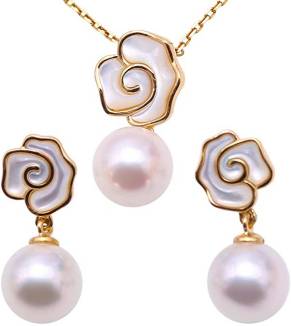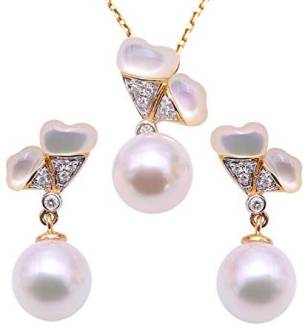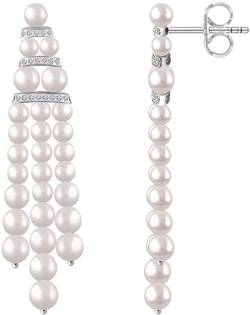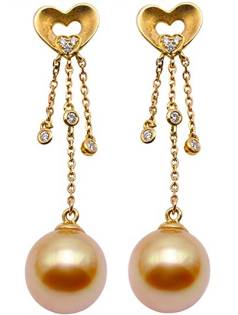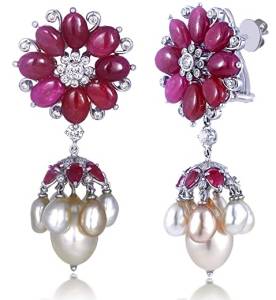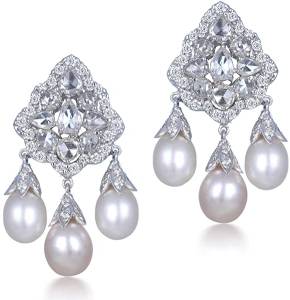Natural pearls of the finest quality have been treasured as a gems and objects of beauty since ancient times so much so that the word pearl has become a metaphor for something very rare, valuable and admirable (such as pearls of wisdom).
‘The pearl is the queen of gems and the gem of queens.’ ~Author Unknown.
All art is autobiographical; the pearl is the oyster’s autobiography. ~Federico Fellini
Click On The Images
“Natural pearls” or “wild pearls” are the ones that form spontaneously in nature without any kind of human intervention and they are extremely rare. Unlike crystalline gemstones, which usually must be cut and polished to be fully appreciated as ornaments, pearls need no help from the hand of man to bring out their allure.
The most desired and hence the most valuable pearls are the Nacreous pearls. These are predominantly produced by two groups of mollusks viz. bivalves or clams. One variety of nacreous pearl bivalves – the pearl oyster – lives in the sea (salt water), while the other distinct group of bivalves – lives in freshwater; these are the river mussels such as the freshwater pearl mussel.
Naga Black Mo Pearl Bead Bracelet 18k Gold Diamonds
Click On The Image
Natural pearls grow within the shells of the wild oysters or the mussels. The process begins as a defense mechanism against a potentially threatening irritant such as a grain of sand or a piece of shell or coral or a parasite which gets inside the shell by chance. In order to protect its delicate body from the irritant, the oyster secretes a substance called nacre that surrounds the irritant foreign object in a protective layer. The oyster keeps secreting the nacre & over the years the nacre builds up in overlapping layers into a true pearl.
The nacre (also known as the mother of pearl) is an organic-inorganic composite material composed of the very same substance produced by the oyster to line the inner layer of its shell. It is very strong, resilient, and iridescent. A characteristic patina is produced when light is reflected from these overlapping layers.
14k White Gold 12-12.5mm Dyedgrey Baroque Freshwater Cultured Pearl Satin Lock Clasp Necklace, 17.5
Click On The Images
Cultured pearls are created by a process similar to their natural counterparts. But a slight nudge is given by harvesters to trigger the formation. To make a cultured pearl, the harvester opens the oyster shell and cuts a small slit in the mantle tissue. Small irritants are then implanted under the mantle. A tiny piece of mantle tissue from a donor shell can also be transplanted into a recipient shell. A spherical bead can be added to get the desired round shaped pearl or it can be done un-beaded.
The bulk of saltwater cultured pearls are grown with beads. The trade name of the cultured pearls are Akoya, white or golden South sea, and black Tahitian. The greater part of the bead-less gems are mantle grown in freshwater shells in China, and are called freshwater cultured pearls.
Natural 8.5-9.5mm White Gray Round Akoya Seawater Pearl and Black Tahitian Pearl Necklace
Click On The Image
Though natural & cultured pearls are deemed to be of equivalent quality, natural pearls are much more expensive as they are very rare jewels.
Though cultured & natural pearls are difficult to distinguish but a well equipped gem testing laboratory can distinguish natural pearls from cultured pearls by using a gemological x-ray in order to examine the center of a pearl.
Beneath the X-ray, cultured & natural pearls have a distinctive inner structure. A beaded cultured pearl shows a solid center with no concentric growth rings, whereas a natural pearl shows a series of concentric growth rings. A bead-less cultured pearl may show growth rings, but also a complex central cavity.
Click On The Images
One more major difference between natural and cultured pearls lies in the nacre layer. The nacre layer of a natural pearl is much thicker than that of a cultured pearl, even if the two have similar diameters.
Natural pearls are sold by weight in carats. On the other hand cultured pearls are sold by size measure by the diameter of pearls.
Attributes Determining a Pearl’s Value:
Natural and cultured pearls emerge in an assortment of shapes, sizes and colors. As such, certain key attributes are used as yardsticks to determine the value of a pearl. The main value determining factors are as follows:
1. Size
The size of a near-round or round pearl is its diameter measured in millimeters. Baroque shapes are measured by their dimensions of length, width and depth.
Other factors being similar, larger pearls are more valuable.
Diameter sizes between 7mm & 9mm are preferred for necklaces & earrings featuring Akoya and freshwater pearls.
On the other hand, diameter sizes from 9mm to 11mm are voguish for South Sea and Tahitian pearls. Statement pieces feature even larger pearls.
White and Gold Pearl Spiral Bracelet with Turquoise Bead and Baroque Pearls
Click On The Image
2. Shape
Based on their shapes, pearls are classified into three main categories: spherical, symmetrical, and asymmetrical. These gorgeous jewels occur in seven basic shapes: round, near-round, oval, button, drop, semi-baroque, and baroque.
The GIA system describes these shapes as follows:
| Shape | Description |
| Round | Uniformly spherical |
| Near Round | Almost spherical, with some minor variations |
| Oval | Symmetrical, rounded and oblong |
| Button | Symmetrical, slightly flattened |
| Drop | Symmetrical, pear shaped |
| Semi-Baroque | Irregular, not quite symmetrical |
| Baroque | A pearl with an irregular shape |
The conditions in which a pearl develops are not conducive to formation of round (spherical) pearls. Consequently, round is the rarest shape seen. Thus, round shape is the most valuable among pearls of closely matched attributes. Then again, some connoisseurs treasure well-proportioned oval, pear and baroque ones and attach more value to such pearls.
Akoya pearls are generally round. Demand for round pearls has honed culture techniques for them. Consequently, we have started seeing more nucleated saltwater pearls in round shapes. Also, more and more freshwater varieties are also being seen in round shapes. Unique shaped baroque ones have their own distinctive charm.
Click On The Images
3. Color
Pearls can display upto three components in their color attribute. The body color is its main predominant color.
The overtone is the see-through color stretched out over the body-color. Many times there are more than one overtones.
The orient is the nacreous rainbow of colors that dances on the curvature of the pearl.
Body color is the property of all pearls. While, very few flaunt overtone or orient or both.
Both natural and cultured pearls exist in a vast array of colors. The body-colors are categorised into warm and cool hues based on the images they evoke. Green, blue and violet are classified as cool hues while orange, yellow and pink are rated as warm hues. Pearl colors tend towards being subtle, soft and muted.
The effect of color on the value of a pearl varies with time. Market forces of demand-pull and supply-push impact the prices. At times, the fashion in vogue creates a demand for particular colors. It significantly increases the price of such colors. When fashion changes, the prices subside.
Likewise, if a particular color is in short supply at a point in time, its value increases. On the other hand, if the market is flooded with pearls of a particular color, its value decreases.
Some pearls are also treated to enhance their color. Declaring such treatment in the accompanying certificate is an ethical trade practice.
Click On The Images
4. Luster
Luster is the light reflecting quality of a pearl’s surface. Highly lustrous ones reflect light with high intensity. Luster is a major contributing factor to a pearl’s beauty. GIA has established a luster grading scale for pearls. It is as follows:
- Excellent – Reflections appear bright and sharp
- Very Good – Reflections appear bright and near sharp
- Good – Reflections are bright but not sharp, and slightly hazy around the edges
- Fair – Reflections are weak and blurred
- Poor – Reflections are dim and diffused
It goes without saying that pearls with higher luster grades command higher prices. And luster is the most important attribute that should be considered while choosing a pearl.
5. Surface
Surface area of pearls are generally marked with bumps and/or blemishes. They are reviewed according to their visibility, location, number, size, and the type of blemish. Too many bumps and blemishes lessen the durability and lower the value of a pearl. Such bumps and blemishes have a lower impact if they are fewer in number, smaller in size or could be hidden underneath the jewelry setting.
Again, GIA has pioneered a surface scale for these gems. This scale distinguishes pearls into Clean, Lightly Spotted, Moderately Spotted, or Heavily Spotted. Cleaner the gems higher their value.
At times, these characteristics add character and lot of beauty to the gem and can enhance its value.
Click On The Images
6. Nacre Quality
The body of the mollusk secretes the nacre. It is the stuff that shapes the pearl layer upon layer and gives it its iridescent & reflective properties.
Thickness of nacre confers durability and beauty upon the pearl. If the nacre coating is too thin or damaged, it negatively impacts the pearl’s durability.
It is obvious that a gem coated with thickset nacre of great beauty commands higher value.
7. Matching
The ‘matching’ criteria applies to jewelry pieces with more than one pearl. It refers to the uniformity in quality of all the pearls in a jewelry piece. Once again, GIA has created a matching scale which goes from excellent to poor. Sometimes, the pearls may have been mismatched by design to create a fashion statement. At such times the matching scale remark is ‘not applicable.’
8. Type of Pearl.
Pearl-type is an important factor determining the value of a pearl. Freshwater pearls are less expensive than sea-water pearls. South-sea pearls are generally more expensive than other salt-water pearls.
Click On The Images
See Also:
Pearls
| Pearls | Baroque Pearls |
| Akoya Pearls | South Sea Pearls |
| Tahitian Pearls | Gemstone Cleaning Guide |
| Jewelry Nickel Allergy |
